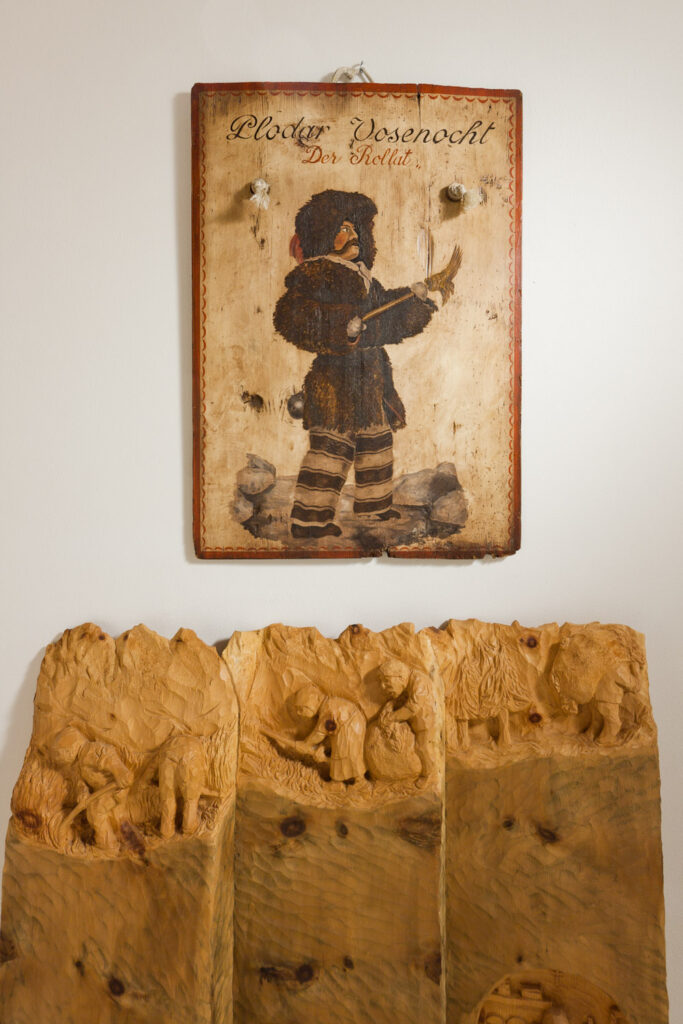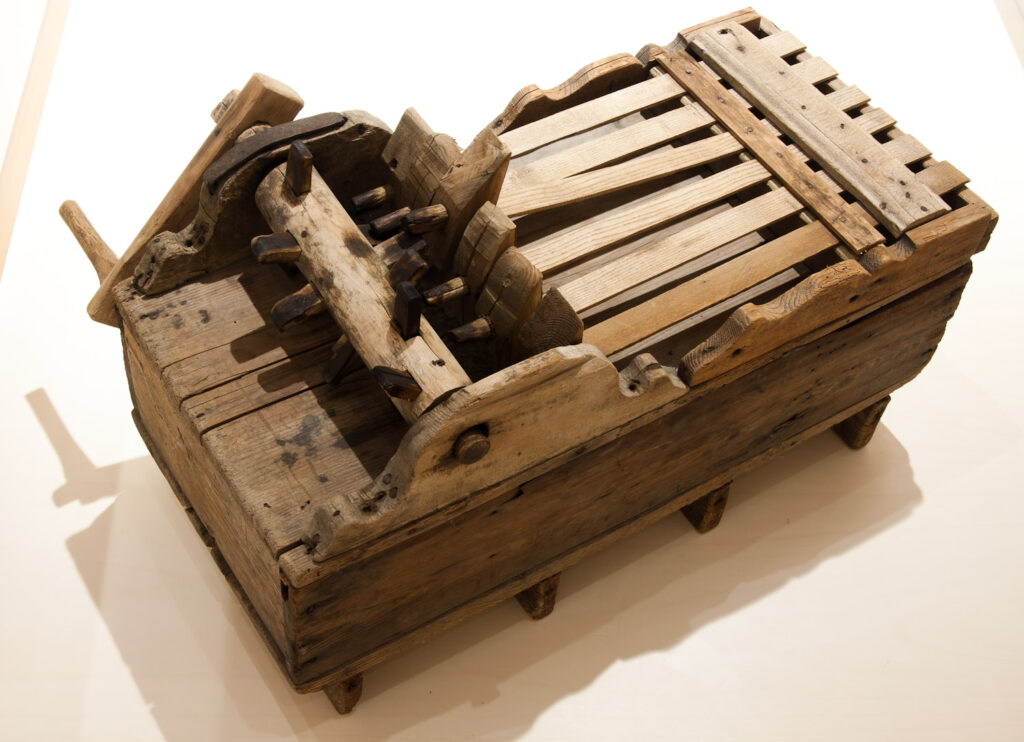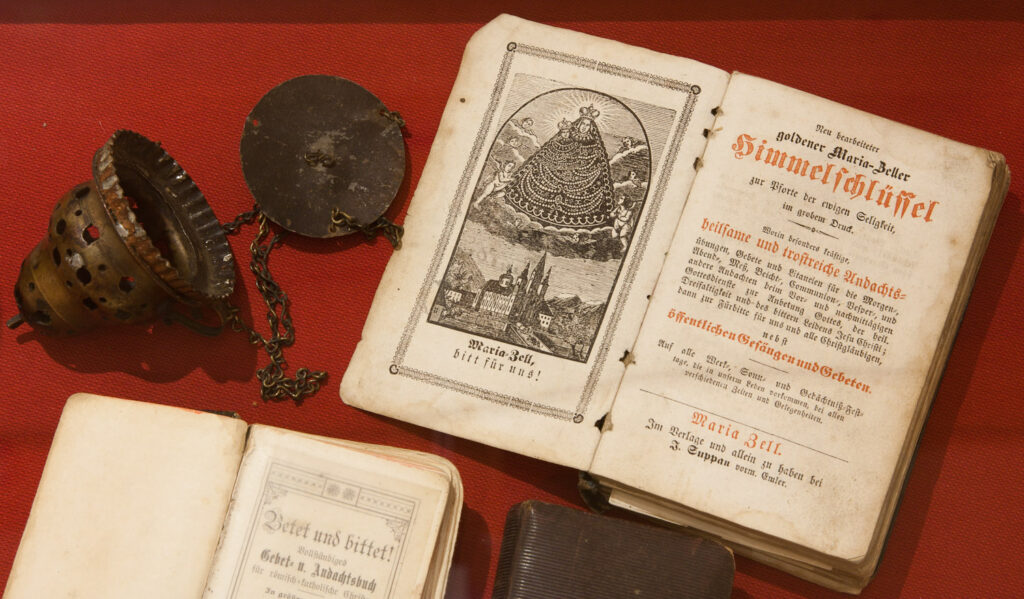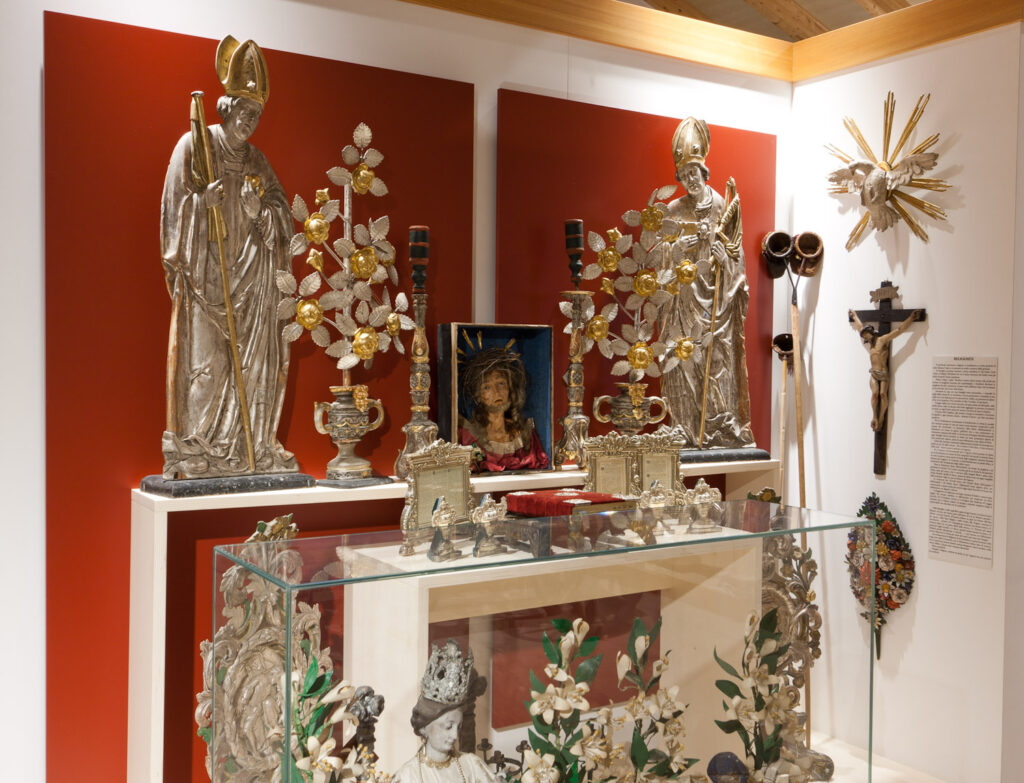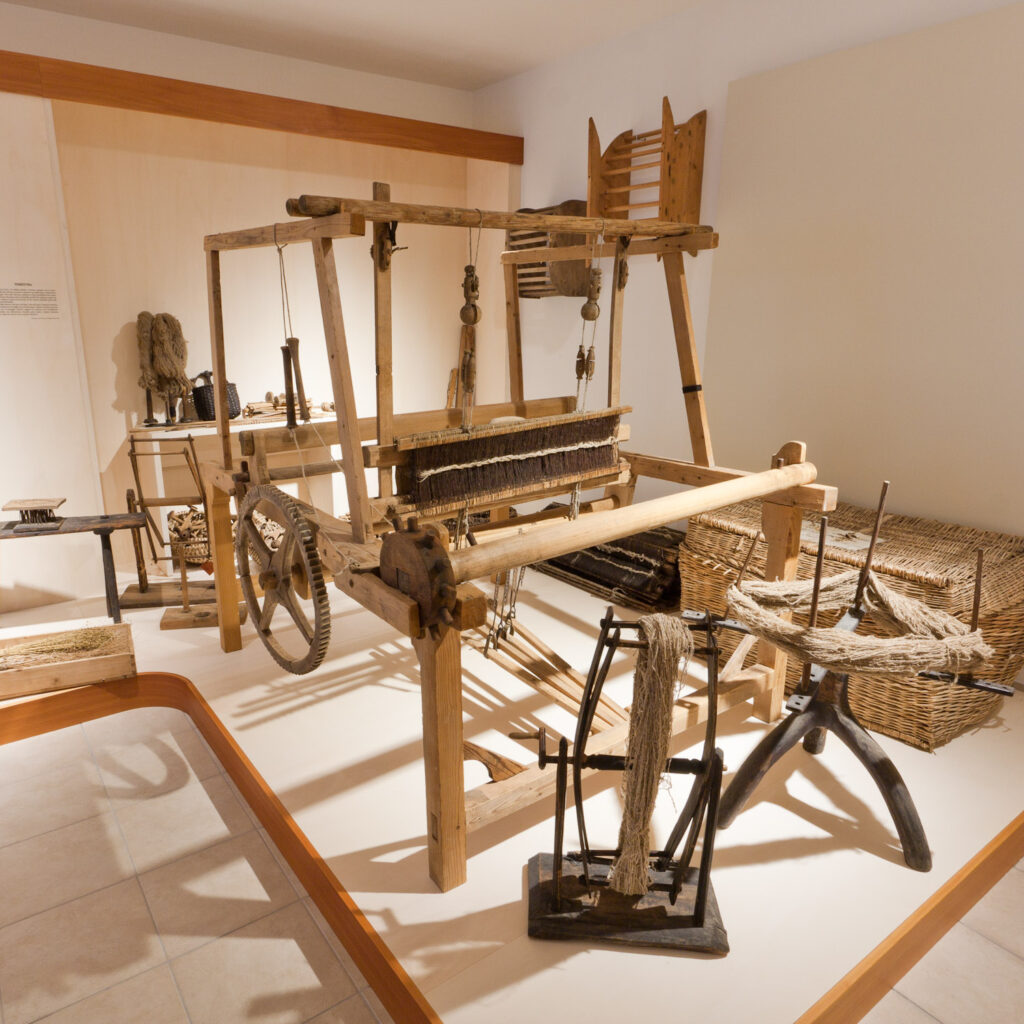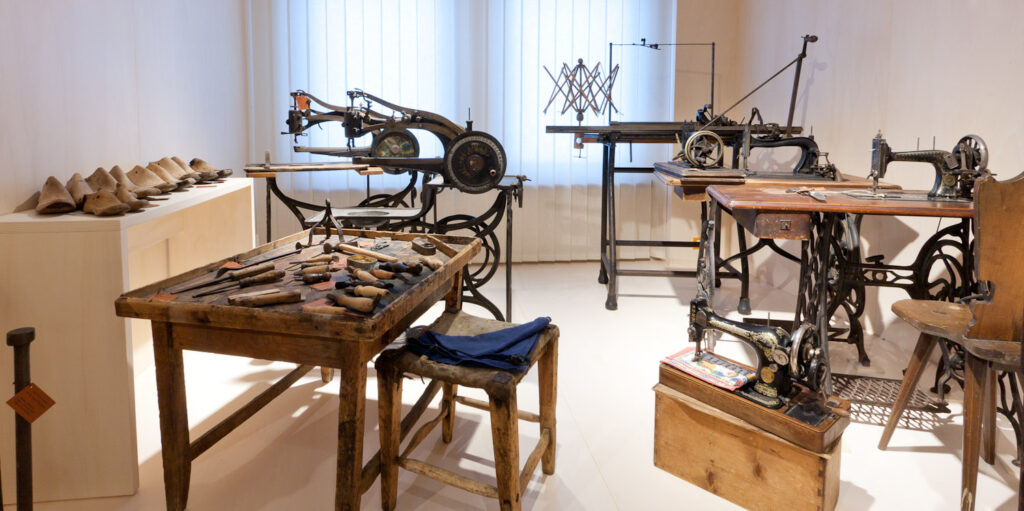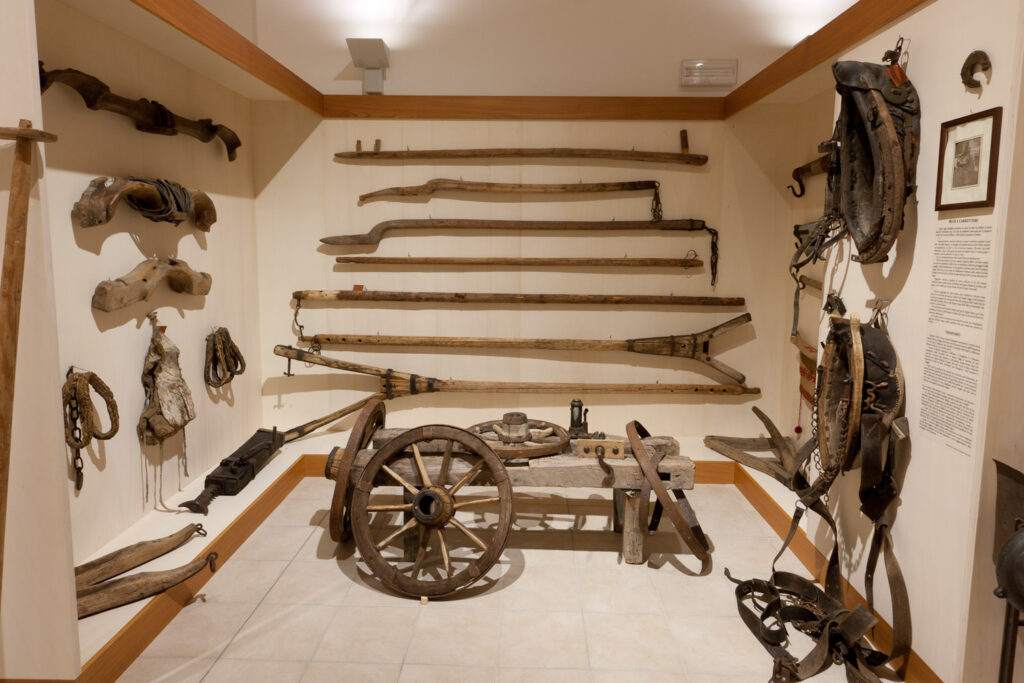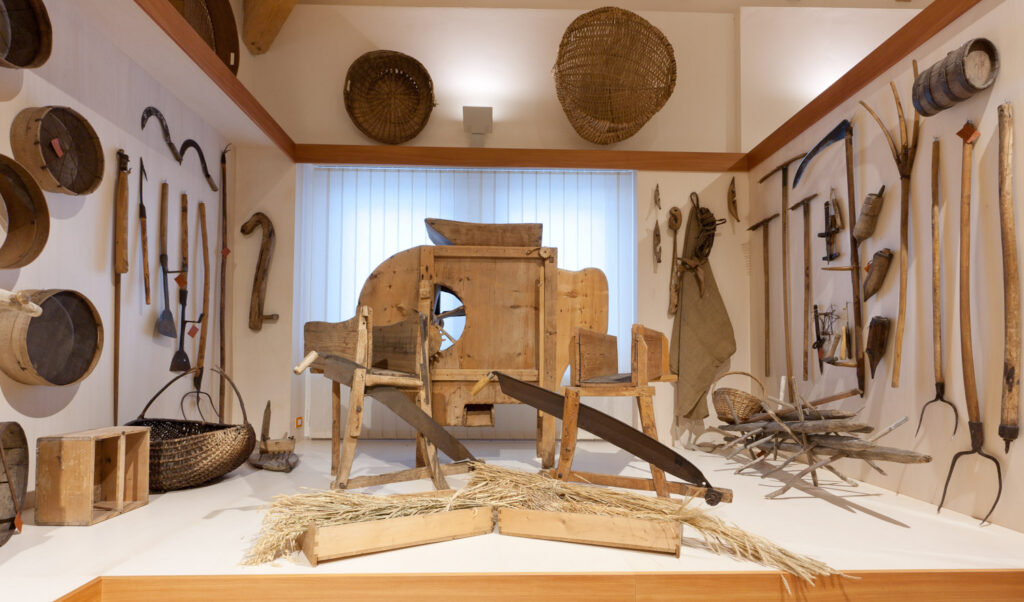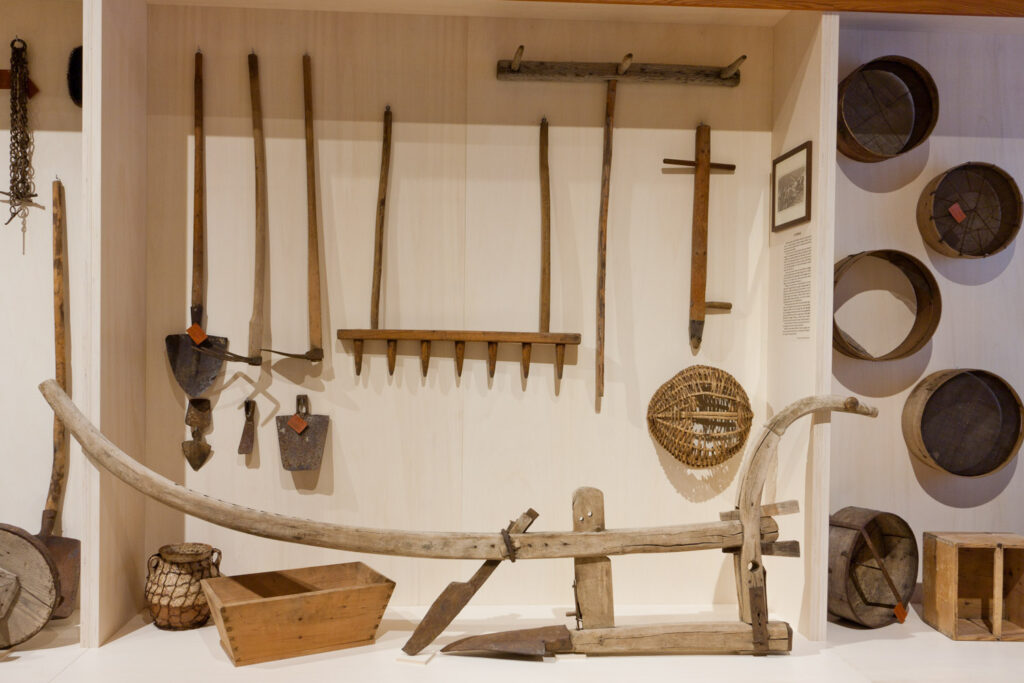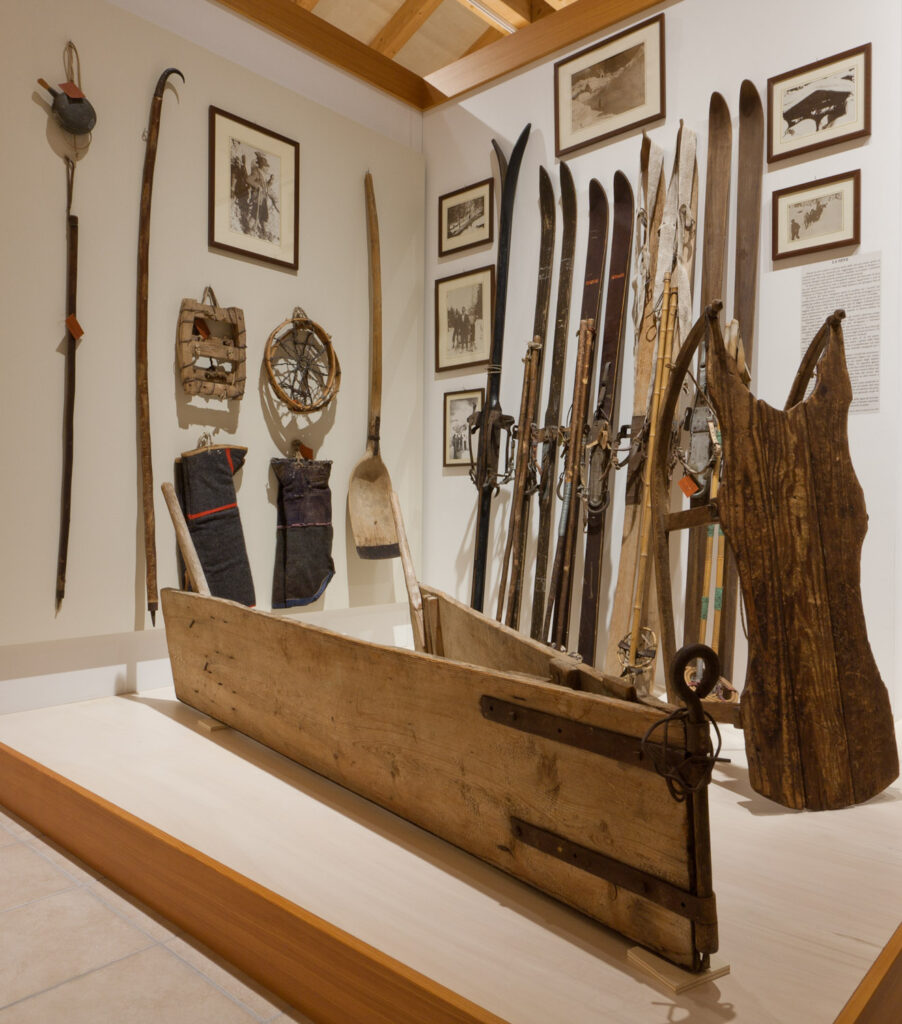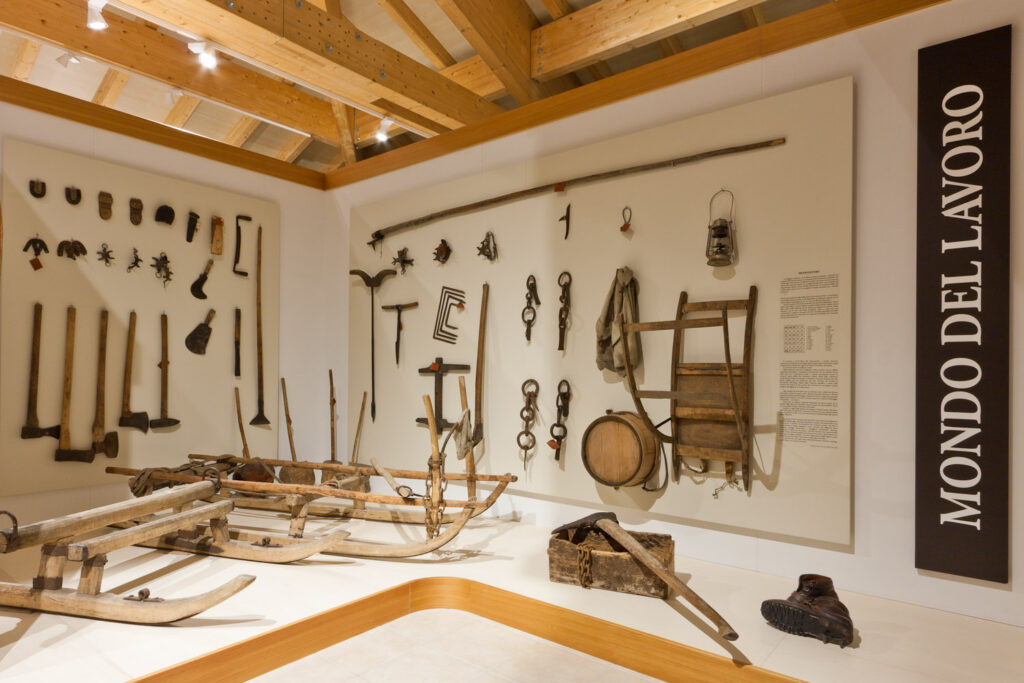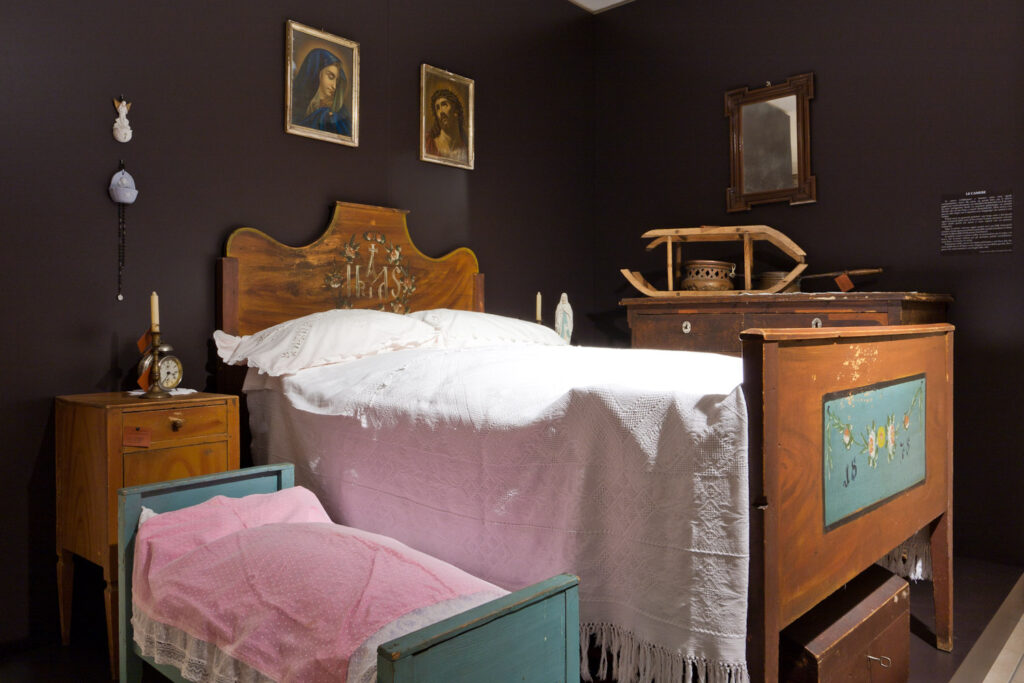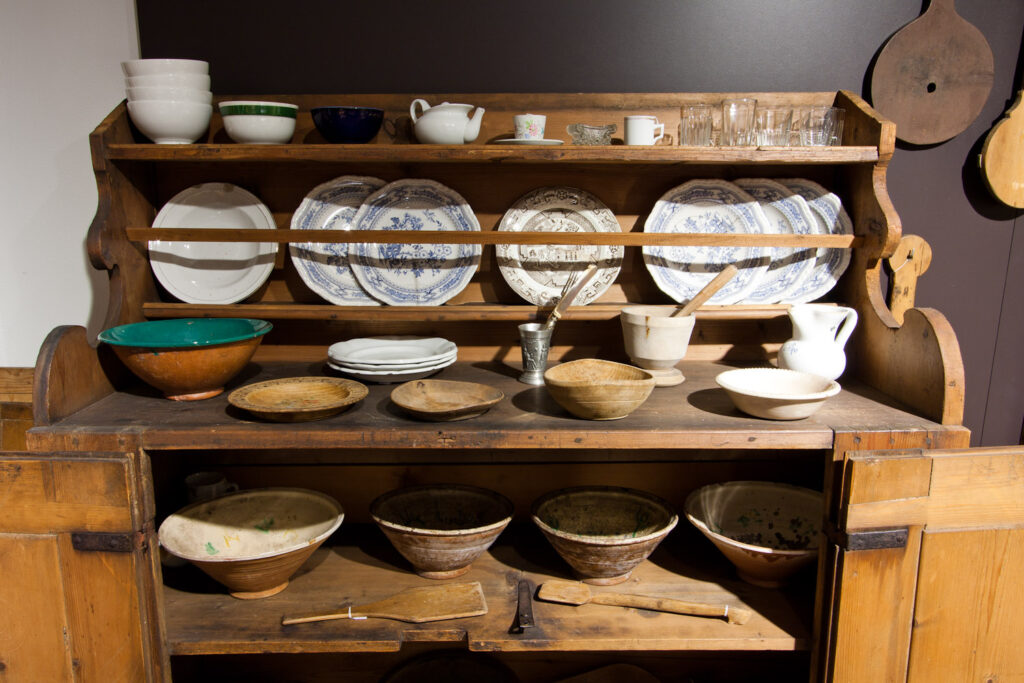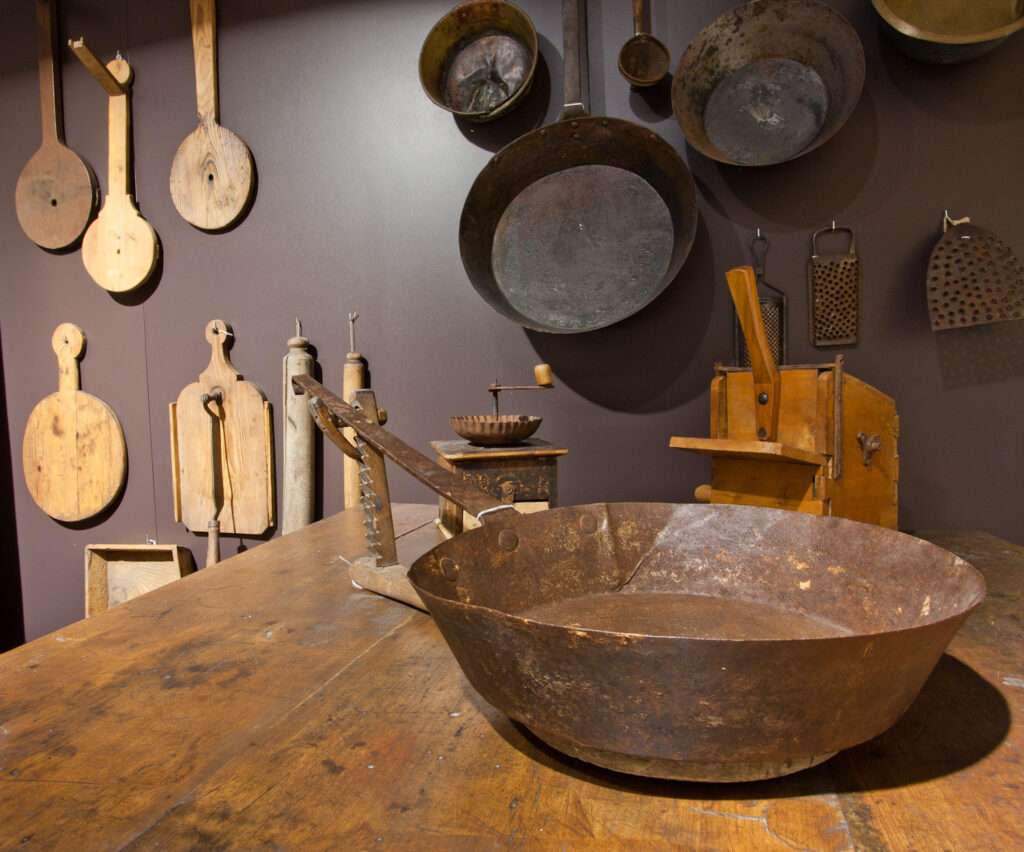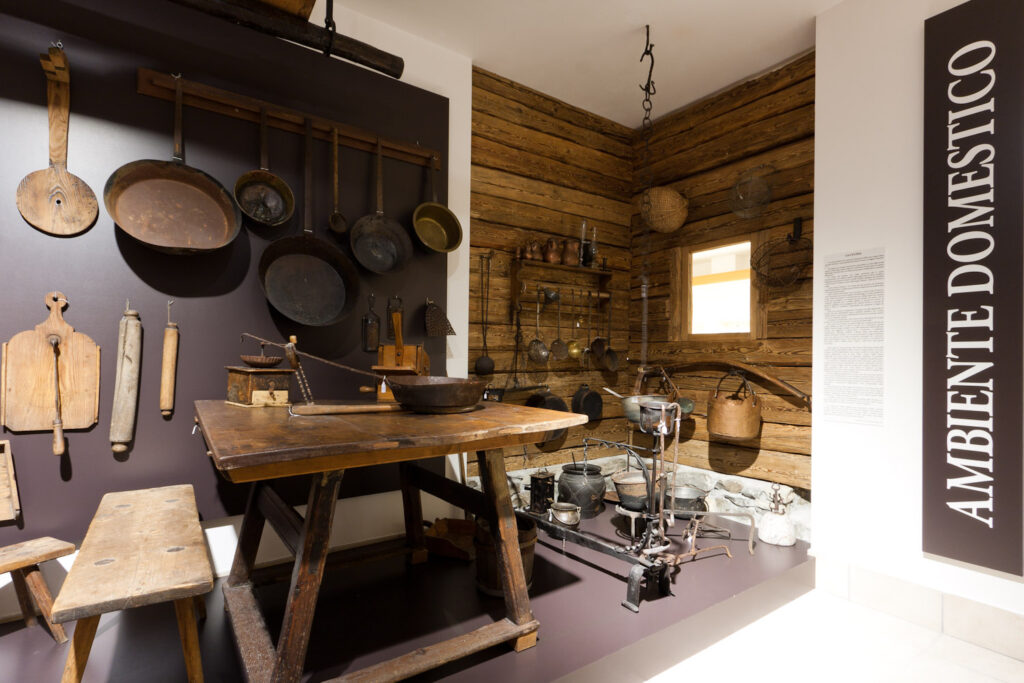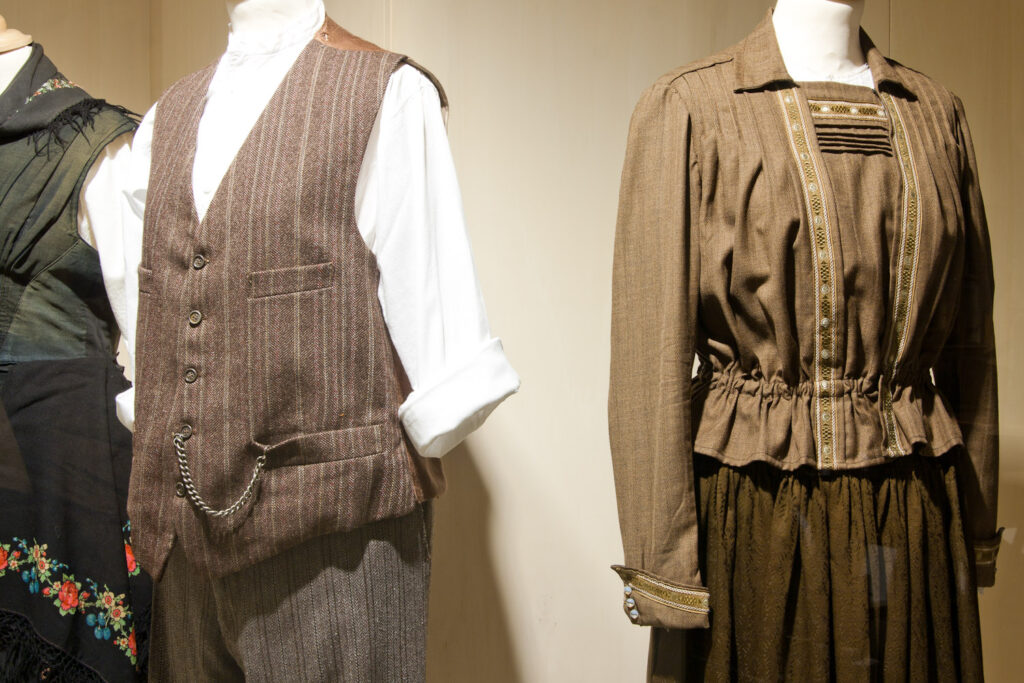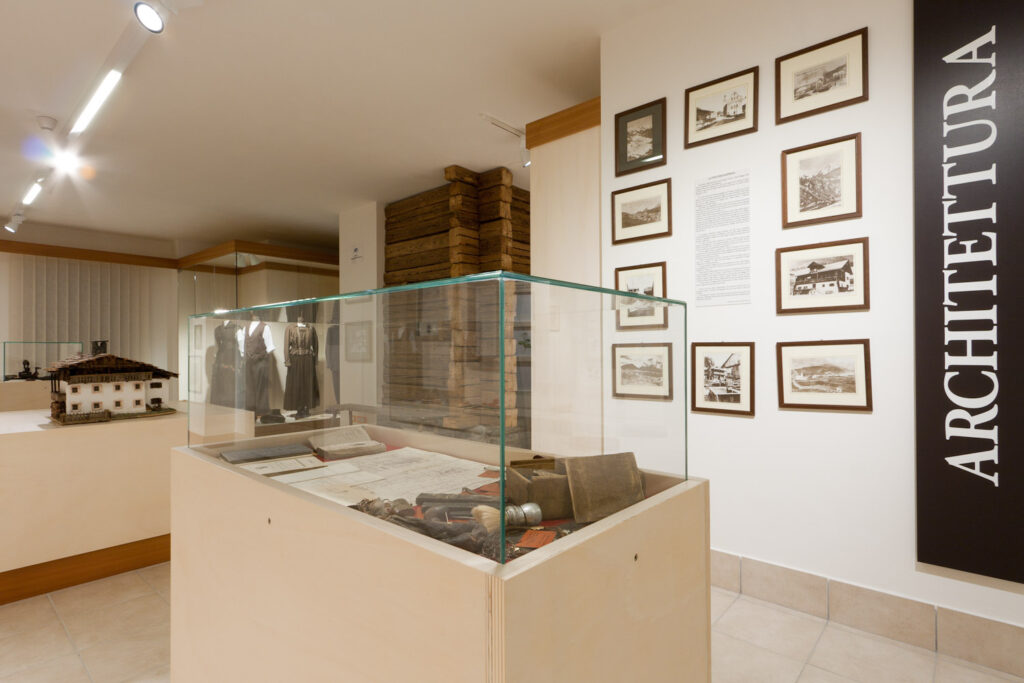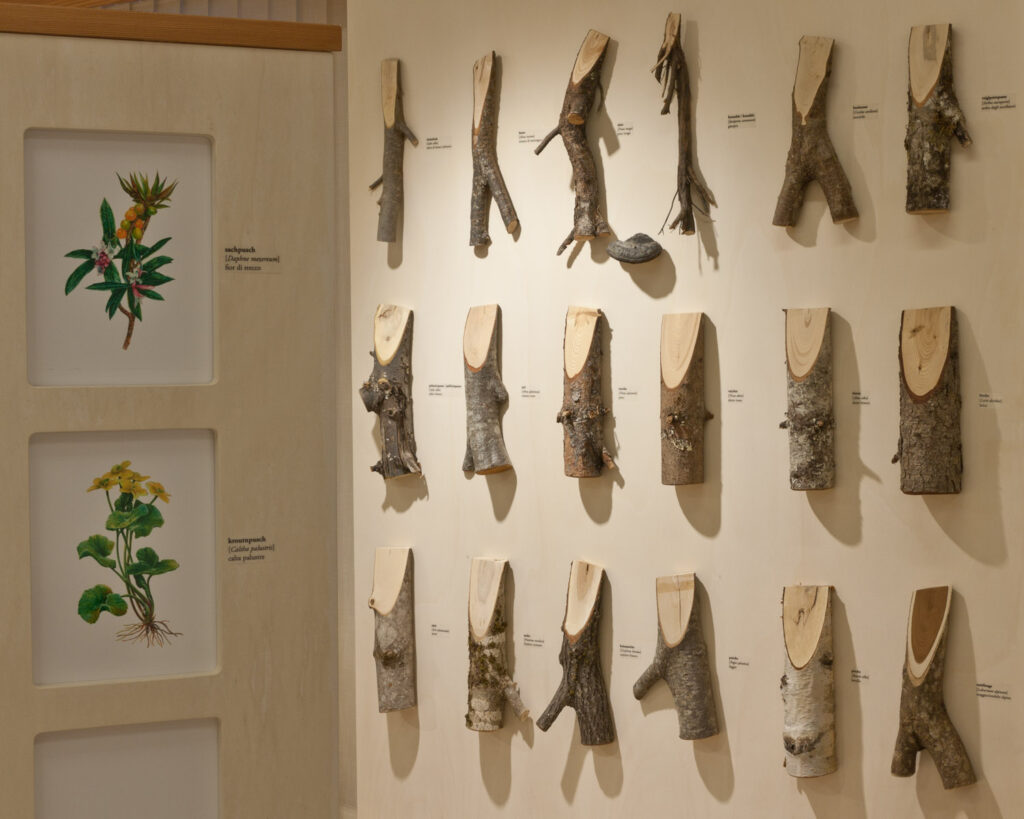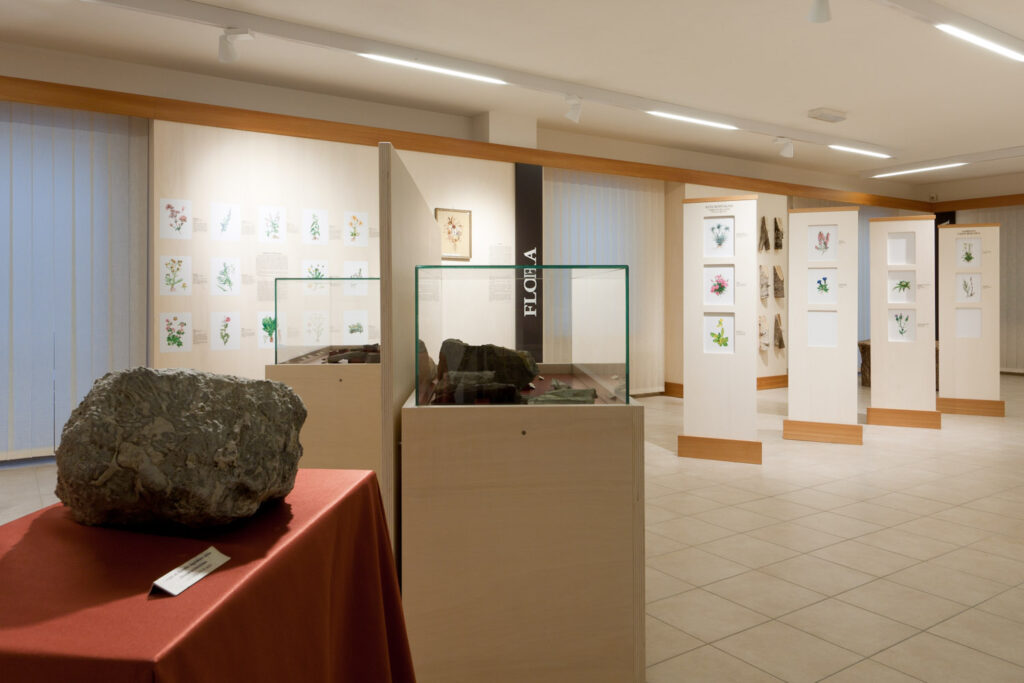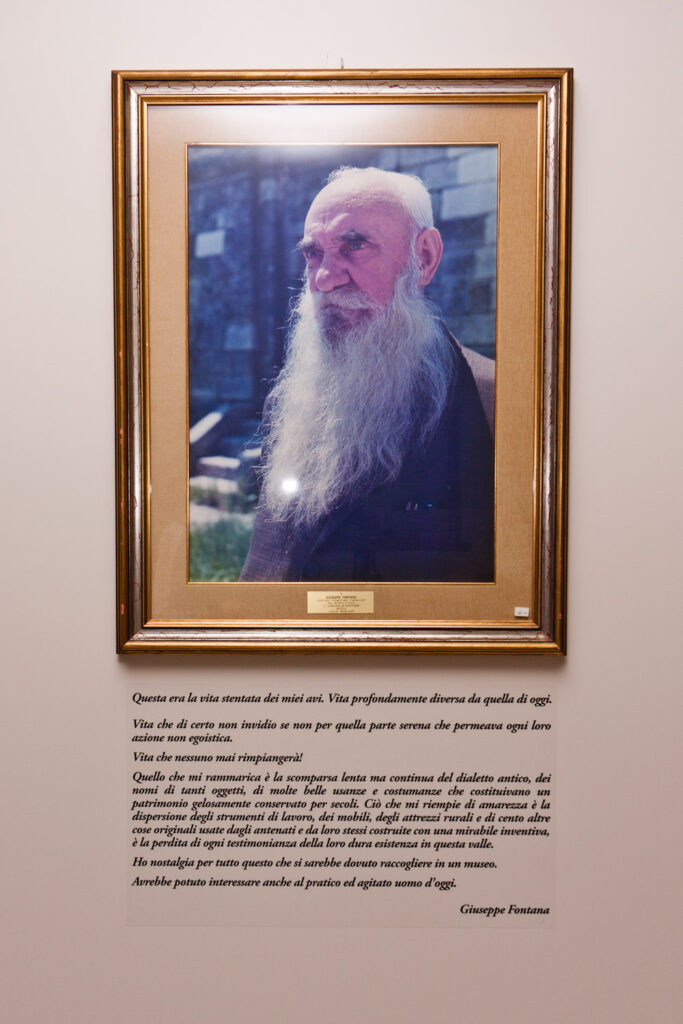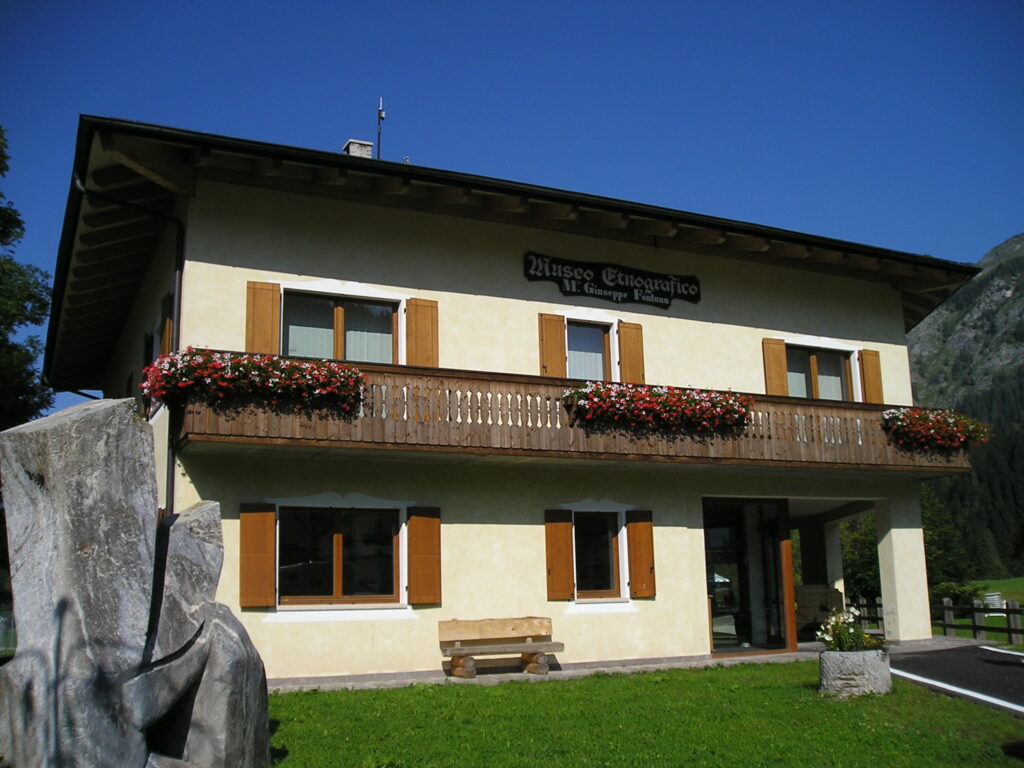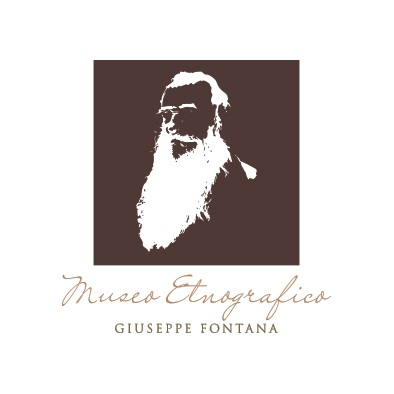
The Museum Network: culture and territory to be promoted and safeguarded.
In the 1960s and ‘70s the concern of the teacher Giuseppe Fontana was to somehow stem the dispersion of Sappada’s cultural heritage taking place, so he occupied himself collecting certain objects such as agricultural and household tools in everyday use so as to constitute an Ethnographic Museum, which was set up in 1972 and developed in the following years in a building in the district of Mühlbach. On his death, on 12th February 1975 the ethnographic museum was named after him and since then the collections have been enriched as a result of the sensitivity of those who were able to appreciate the importance of the work undertaken to safeguard the memory of the culture of Sappada. In 1999 a geological and paleontological section was set up by Prof. Alberto Peratoner of Venice, in which the geological history of the valley is described with samples of all the rocks and some fossil specimens found locally.
In recent years, the local Administration has felt the need to find a more adequate space for the Ethnographic Museum and, especially, to give shape to a single and articulated theme in the light of the expansion of the collections. With this in mind new facilities were identified in a renovated building in Cima Sappada and the subsequent transfer of materials was embarked upon. Under the new concept, the “Giuseppe Fontana” Ethnographic Museum offers a full itinerary from the natural environment to the identity of the community into which it is settled and integrated. The visitor is introduced to information on the geology, flora and fauna of the valley of Sappada and to understand the organic unity of the environment that was home to the first inhabitants in the Middle Ages.
A historical section explores the origins and history of Sappada, the interesting life testimonies of which are illustrated through the ethnographic collections, such as the environment which forged peoples’ habits. The area’s relative isolation in the past, its special climatic conditions, together with the unique identity of this “island” of a German-speaking community, engendered a system of frugal and almost self-sufficient living.
This encouraged the development of a so-called “culture of wood” that the architectural styles of the valley bear eloquent witness to, and the museum has its own section on this and the many tools and products of the simple life led by people of Sappada, the tools and crafts used in this agro-forestry-pastoral system as well as the garments in wool and linen fabrics manufactured in the town and the footwear made from tanned skins by skilled craftsmen. Rounding up the tour of the museum is a section explaining the calendar of religious and secular customs, still present in the local culture, among which is the particularly well-known Sappada Carnival (vosenòcht) but not forgetting the traditions that popular piety has given rise to around the most significant moments of the liturgical year.
Summer opening (June – September) and winter (New Year’s Eve and Carnival)
Guided tours
Open on request (only for groups) at other times
For detailed opening hours and other information please visit http://www.plodn.info/
Free offer
Reserved parking, with level access to the museum.
– Stair lift with staff if required
– No internal steps
– Wheelchair accessible but not equipped bathroom

